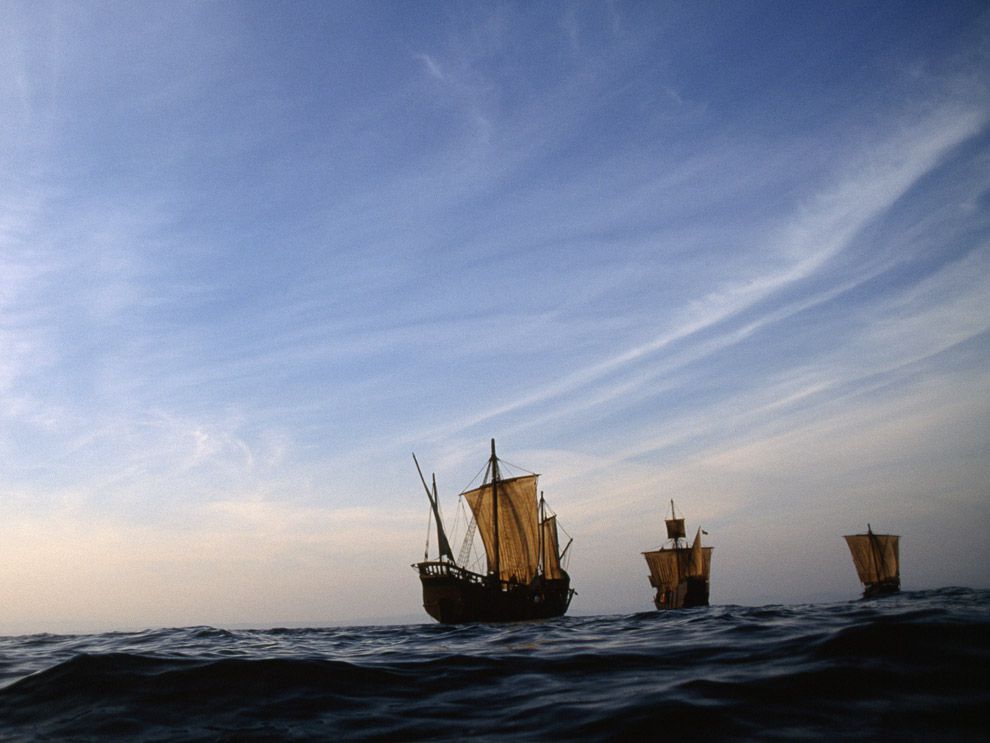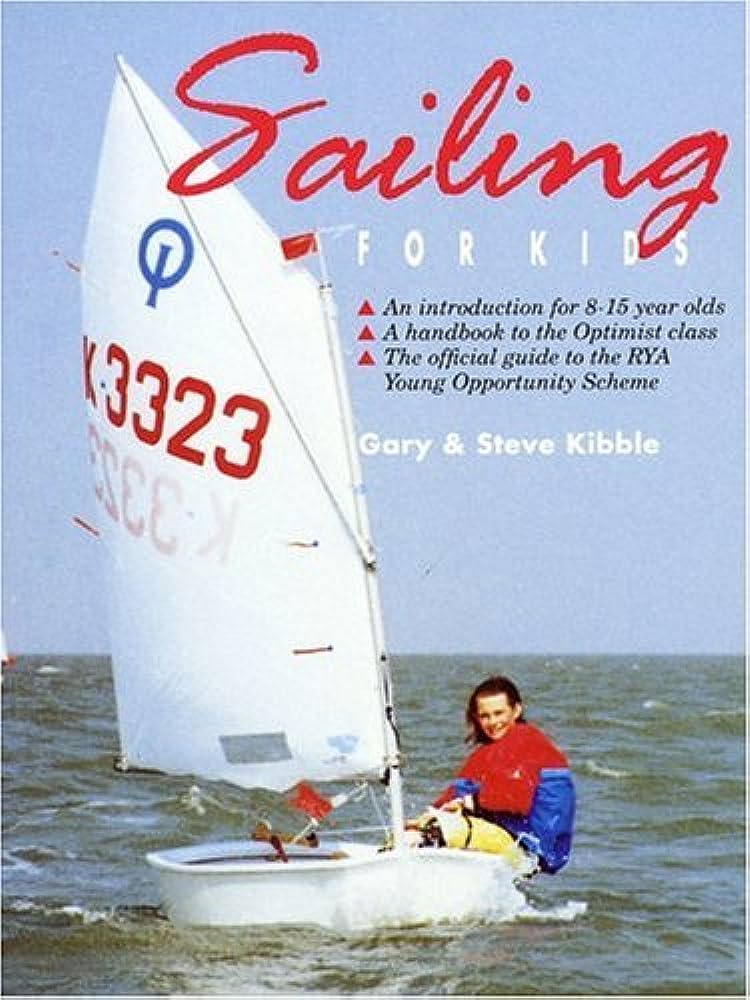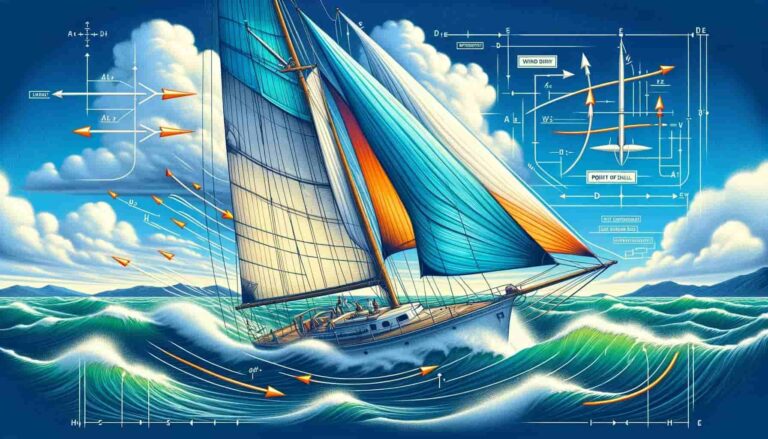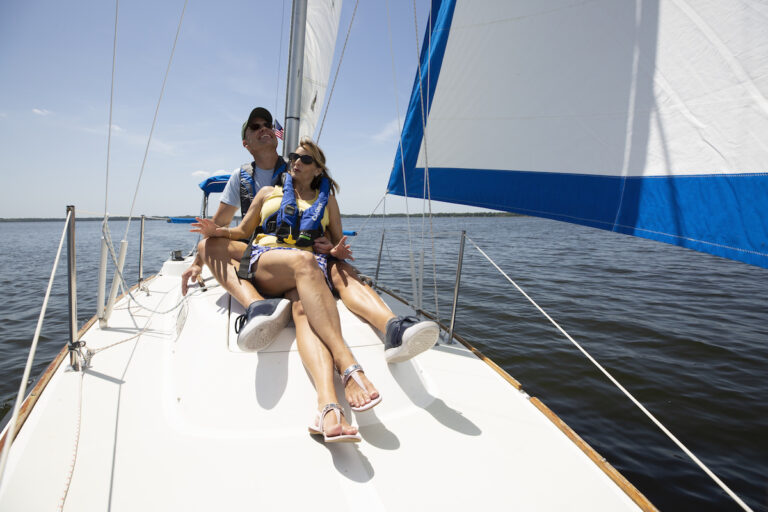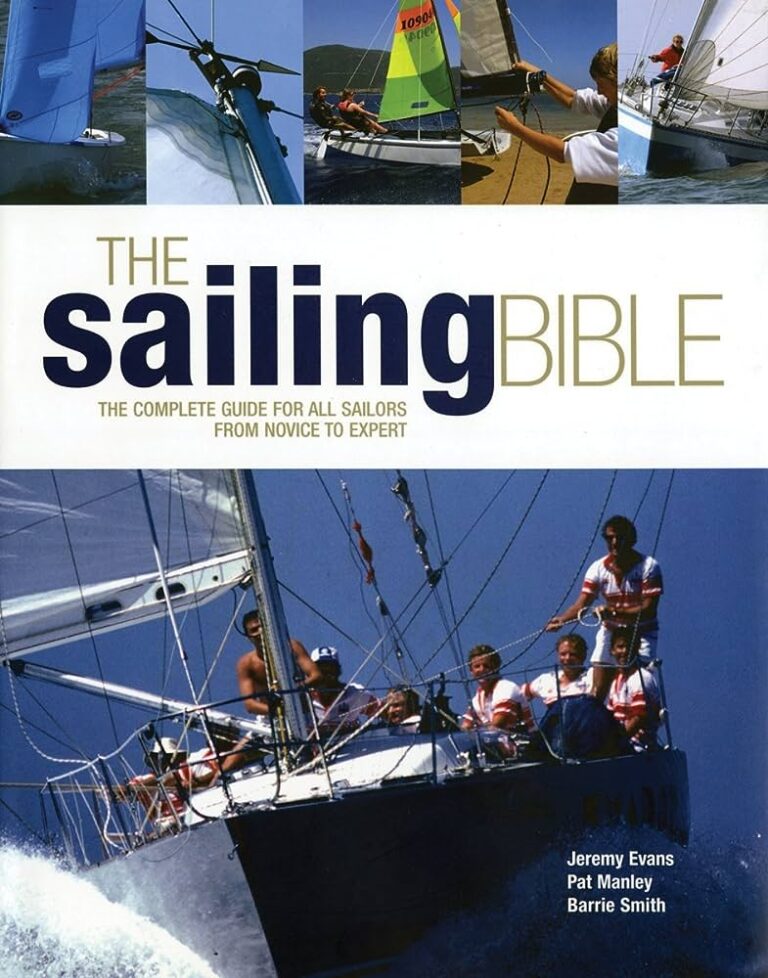The History of Sailing: A Journey Through Time
The history of sailing spans centuries, with advancements in navigation and boat design contributing to its evolution. In ancient times, civilizations such as the Egyptians and Phoenicians used sail-powered vessels for trade and exploration.
Sailboats played a significant role in the Age of Discovery, as European nations embarked on maritime expeditions in search of new trade routes and territories. The development of steam-powered ships in the 19th century marked a shift away from sail as the primary means of propulsion, but sailing remains an important recreational activity and competitive sport.
Today, sailing has become an integral part of human history, reflecting our innate desire to explore and conquer the vast oceans.
Ancient Origins Of Sailing
Sailing has an ancient origin, dating back thousands of years. It is a fascinating journey through time, showcasing the history and evolution of navigation techniques on the open waters. From ancient Egypt to the Vikings, sailing has played a crucial role in human exploration and trade throughout history.
Early Navigational Techniques And Tools:
- Sailors in ancient times relied on a variety of navigational techniques and tools to explore the vast oceans. Here are some notable methods employed by early sailors:
- Celestial navigation: By observing the stars, sun, and moon, sailors were able to determine their position and navigate their way across the seas.
- Dead reckoning: Sailors used this technique by estimating their position based on their starting point, speed, and direction, taking into account factors such as wind and current.
- Coastal navigation: Sailors would hug the coastline and use landmarks, such as prominent rocks or distinctive land formations, to navigate.
- Magnetic compass: The invention of the magnetic compass greatly aided sailors in determining their direction and ensuring a more accurate navigation.
Mesopotamia: Birthplace Of Sailing:
- Mesopotamia, often considered the cradle of civilization, played a pivotal role in the development of sailing. Here are key points about Mesopotamian sailing:
- Mesopotamians, living between the Tigris and Euphrates rivers, were among the first to utilize boats for trade and transportation.
- They constructed various types of boats, such as reed boats and wooden vessels, which allowed them to navigate the rivers and venture into the waters of the Persian Gulf.
- The development of sail technology in Mesopotamia revolutionized transportation, as it enabled boats to harness the power of the wind for propulsion.
- Sailing became crucial for trade, allowing the Mesopotamians to establish extensive networks and exchange goods across distant regions.
Exploring The Remarkable History Of Phoenician Sailors:
- The Phoenician sailors left an indelible mark on the history of sailing. Here are some notable aspects about their seafaring exploits:
- The Phoenicians, originating from the eastern Mediterranean region, were renowned for their exceptional maritime skills and extensive trade networks.
- They created a vast empire that spanned across the Mediterranean, establishing colonies along the coasts of North Africa, Malta, Sicily, and Spain.
- The Phoenicians developed innovative ship designs, such as the trireme, which revolutionized naval warfare and expedited long-distance journeys.
- Their navigational prowess led them to explore previously uncharted waters, including the Atlantic Ocean, as evidenced by their legendary voyages and circumnavigation of Africa.
These fascinating tales of early navigational techniques, the birth of sailing in Mesopotamia, and the remarkable exploits of Phoenician sailors demonstrate the rich history and vital role that sailing has played in the course of human civilization. It is awe-inspiring to contemplate how these ancient seafarers ventured into the unknown using their resourcefulness, perseverance, and a deep understanding of the wind and the waves.
Advancements In Sailing Technology
Sailing technology has come a long way throughout history, experiencing remarkable advancements that have revolutionized the way we navigate the waters. From ancient sailboats to modern-day yachts, the journey through time showcases how innovation has shaped the art of sailing.
Sailing has a long and fascinating history that has been shaped by advancements in technology. Throughout the centuries, sailors have continually innovated and improved their vessels, resulting in faster, more efficient, and more seaworthy boats. In this section, we will explore the impact of the sail on sailing, the evolution of boat designs and hull shapes, and the revolutionary innovations that have transformed sailing into what it is today.
Introduction Of The Sail And Its Impact On Sailing:
- The sail was a revolutionary invention in the history of sailing, transforming it from a laborious task into a means of efficient transportation.
- The introduction of the sail allowed sailors to harness the power of the wind, enabling them to travel faster and reach distant shores.
- Sail technology revolutionized trade and exploration, facilitating the expansion of empires and opening up new trade routes.
- This innovative development in sailing technology had a profound impact on various aspects of society, including commerce, culture, and warfare.
Evolution Of Boat Designs And Hull Shapes:
- Over time, sailors experimented with different boat designs and hull shapes to enhance speed, stability, and maneuverability.
- Early boats were simple and narrow, allowing for easy paddling or rowing, but lacked stability in rough waters.
- The invention of the keel revolutionized boat stability, enabling boats to withstand harsh weather conditions and sail more efficiently.
- With advancements in naval architecture, boats evolved from sailboats to galleys, which were powered by both sails and oars, facilitating longer journeys and better adaptability to changing wind conditions.
Revolutionary Innovations: From Galleys To Oceangoing Vessels:
- The transition from galleys to oceangoing vessels was a significant turning point in sailing history.
- The introduction of multiple masts and rigging systems greatly improved a ship’s maneuverability and allowed for larger sails, resulting in faster and longer voyages.
- The invention of the magnetic compass and navigational instruments revolutionized maritime navigation, enabling sailors to navigate accurately and explore uncharted territories.
- The development of shipbuilding techniques such as carvel planking and iron shipbuilding further enhanced the durability and seaworthiness of vessels, leading to the age of exploration and the discovery of new lands.
Throughout history, advancements in sailing technology have played a pivotal role in shaping and expanding human civilization. From the invention of the sail to the evolution of boat designs, each innovation has pushed the boundaries of what was once thought possible, allowing sailors to explore the vastness of the world’s oceans.
Today, we can appreciate the rich history of sailing and marvel at the impressive advancements that have propelled us forward.
Sailing In Exploration And Trade
Embark on a captivating voyage through the history of sailing, where exploration and trade have shaped civilizations. Join us as we uncover the remarkable journey of seafarers, charting new horizons and connecting distant lands. Experience the rich tapestry of cultures and the transformative power of sailing that has left an indelible mark on our world.
Sailors Of The Silk Road: Navigating The Ancient Trade Routes
The ancient trade routes of the Silk Road were a bustling network of connections that spanned continents, allowing for the exchange of goods, culture, and ideas. Sailing played a crucial role in this vast trade network, with sailors navigating treacherous waters and unpredictable weather conditions.
Here are some key points about the sailors of the Silk Road:
- Cultural Exchange: Sailing along the Silk Road not only facilitated the movement of goods but also allowed for the exchange of cultural practices, languages, and traditions between different regions.
- Trading Goods: Sailors transported a wide range of commodities, including silk, spices, precious metals, porcelain, and more. These goods were highly sought after and played a significant role in shaping economies and societies.
- Navigation Techniques: Sailors utilized various navigational techniques, such as using the stars, compasses, and landmarks, to navigate the vast trade routes of the Silk Road.
- Maritime Routes: The Silk Road spanned across land and sea, with maritime routes connecting regions such as China, India, Southeast Asia, the Middle East, and Europe. These routes were known for their challenges, including storms, pirates, and deadly reefs.
Maritime Conquests And Expeditions Of The Vikings
The Vikings were renowned for their seafaring prowess and embarked on numerous maritime conquests and expeditions during the Viking Age. Here are some key points about the maritime conquests and expeditions of the Vikings:
- Exploration and Expansion: The Vikings, fierce warriors and skilled sailors, ventured far from their homelands in Scandinavia to explore new lands, raid settlements, and establish trading networks.
- Longships: The Vikings’ longships, characterized by their sleek and narrow design, allowed for swift navigation across both shallow rivers and open seas. These vessels were well-suited for raiding, trading, and exploration.
- Raiding and Trade Routes: The Vikings’ voyages took them across the North Atlantic, Baltic Sea, Mediterranean, and even as far as North America. They raided coastal settlements, traded with distant civilizations, and established settlements in places such as Iceland, Greenland, and the British Isles.
- Legacy: The Viking expeditions had a lasting impact on the regions they encountered, influencing culture, trade routes, and even language. Their navigational skills and fearless spirit paved the way for future explorers and traders.
The Age Of Exploration: Columbus And The Quest For New Lands
The Age of Exploration, marked by an era of sea voyages, witnessed significant advancements in sailing technology and a fervent desire to discover new lands. Christopher Columbus, an explorer, played a crucial role in this period. Here are some key points about the Age of Exploration and Columbus’s quest for new lands:
- Motivation: The Europeans were driven by a desire to expand their empires, find new trade routes, and seek wealth and glory. Columbus, sponsored by the Spanish crown, embarked on his famous voyage in search of a western route to Asia.
- Columbus’s Voyages: Columbus set sail in 1492, eventually reaching the Americas instead of Asia. This accidental discovery opened up a new era of exploration and colonization, forever changing the course of history.
- Impact: Columbus’s voyages brought about a wave of exploration and colonization, with other European powers following suit. This led to the establishment of vast overseas empires, the exchange of goods, and the merging of cultures.
- Sailing Technology: The Age of Exploration witnessed advancements in shipbuilding, including the development of caravels and other sturdy vessels capable of withstanding long voyages across uncharted waters.
As the winds of discovery filled the sails of courageous sailors, the ancient trade routes, Viking expeditions, and Columbus’s quest for new lands shaped the course of history. These journeys not only expanded knowledge, but also connected distant civilizations, forever leaving their mark on the world.
Sailing Empires And Naval Warfare
Embark on a captivating voyage through the history of sailing, exploring the rise and fall of sailing empires and the gripping tales of naval warfare. Discover the evolution of this timeless maritime tradition, tracing the footsteps of intrepid explorers and uncovering the secrets of the open sea.
Rise Of Naval Powers: Spain, England, And The Netherlands
In the history of sailing, the rise of naval powers played a pivotal role in shaping the course of empires and the development of naval warfare. Three notable maritime nations that emerged as dominant powers during this time were Spain, England, and the Netherlands.
Let’s delve into their contributions and influence:
- Spain: With the discovery of the New World by Christopher Columbus in 1492, Spain became the leading maritime power of the 15th and 16th centuries. They established a vast colonial empire, conquering territories in the Americas, and amassed great wealth through the exploration and exploitation of new lands. Their navigation skills, advanced shipbuilding techniques, and the use of powerful galleons made Spain a formidable force in naval warfare.
- England: As the age of exploration continued, England emerged as a significant naval power in the 16th and 17th centuries. The reign of Queen Elizabeth I saw England challenge Spain’s dominance through its maritime exploits. The English improved upon ship designs, utilizing faster and more maneuverable vessels known as “race-built” ships. The defeat of the Spanish Armada in 1588 further solidified England’s status as a naval force to be reckoned with.
- The Netherlands: The Dutch Republic established itself as a major naval power in the 17th century. Their maritime influence was driven by their merchant fleets, which engaged in extensive trade and colonization endeavors. The term “Dutch East India Company” became synonymous with wealth and power. The Dutch developed an innovative naval strategy, focusing on compact and heavily armed warships called “ships of the line,” which played a key role in their military victories.
Naval Strategy And Tactics: From Galley Fleets To Broadside Warfare
Naval strategy and tactics evolved over the centuries, adapting to changing maritime technologies and warfare approaches. The progression from galley fleets to broadside warfare ushered in a new era of naval dominance. Here are the key developments:
- Galley fleets: Galleys, propelled by oarsmen, were common during ancient and medieval times. These vessels allowed for close combat and boarding, making naval conflicts highly personal and dependent on the prowess of individual sailors. The maneuverability and speed of galleys enabled them to be effective in coastal warfare.
- Shift to sailing ships: The development of reliable sail technology in the late medieval period marked the transition from oar-propelled ships to sailing vessels. This shift expanded the range and capabilities of naval forces, enabling long-distance exploration and trade. Sail-powered ships offered greater endurance and allowed for the transport of heavier weapons and cargo.
- Broadside warfare: The introduction of “ships of the line” with their massive firepower revolutionized naval warfare in the 17th century. These warships were armed with multiple tiers of cannons on each side, allowing for devastating broadside attacks. Naval battles became intense exchanges of cannon fire, with ships maneuvering to unleash salvos against their adversaries. Broadside warfare tactics heavily relied on positioning, firepower, and naval expertise.
Key Naval Battles That Shaped History
Throughout history, several naval battles have had a profound impact on the course of nations and the world. These engagements showcased the naval powers’ capabilities and determined the fates of empires. Here are some pivotal naval battles that deserve recognition:
- Battle of Trafalgar (1805): In this decisive battle during the Napoleonic Wars, the British fleet, led by Admiral Lord Nelson, defeated the combined fleets of France and Spain. This victory established British naval supremacy for over a century, effectively ending Napoleon’s ambitions for invading Britain.
- Battle of Lepanto (1571): Fought between the Holy League, an alliance of Catholic maritime states, and the Ottoman Empire, this battle halted Ottoman expansion in the Mediterranean. It marked a significant setback for the Ottomans, and its influence resonated throughout Europe, highlighting the importance of naval power in defending against formidable foes.
- Battle of Salamis (480 BCE): This ancient naval battle between the Greek city-states, led by Athens, and the Persian Empire proved to be a turning point in the Greco-Persian Wars. Despite being significantly outnumbered, the Greeks utilized superior tactics and effectively crippled the Persian fleet. The victory at Salamis upheld Greek independence and preserved the foundations of Western civilization.
Through the rise of naval powers, the evolution of naval strategy and tactics, and the occurrence of pivotal naval battles, sailing has played an instrumental role in shaping history. The legacies of these maritime achievements continue to inspire and captivate us today.
Sailing In The Modern Era
Sailing in the modern era is a fascinating journey through time, exploring the history of sailing and its evolution. From ancient mariners to cutting-edge technology, this captivating adventure unveils the rich heritage and advancements that have shaped the world of sailing today.
Sailing has come a long way since its humble beginnings. In the modern era, advancements in technology and changes in society have shaped the way we navigate the waters. From the rise of steam-powered ships to the popularity of leisure and competitive sailing, the modern age has seen sailing evolve in various ways.
The Industrial Revolution And Its Impact On Sailing:
- The industrial revolution in the 18th and 19th centuries brought significant advancements in manufacturing and transportation, greatly impacting sailing.
- Sailors witnessed the introduction of new materials, such as iron and steel, which allowed for the construction of larger, sturdier ships.
- The development of steam engines during this period revolutionized sailing, enabling ships to travel against the wind and currents with greater ease.
- With the advent of steam power, sail-powered ships began to decline in popularity and started being replaced by more efficient steam-powered vessels.
- The industrial revolution also led to the establishment of global trade networks, resulting in increased commercial sailing activities.
The Advent Of Steam-Powered Ships And The Decline Of Sail:
- The introduction of steam-powered ships in the 19th century brought about a significant shift in the maritime industry.
- Steamships offered various advantages over sail-powered vessels. They could maintain a consistent speed, navigate through adverse weather conditions, and carry heavier cargoes.
- The decline of sail became evident as steamships gained prominence, with many sailors transitioning to steam-powered vessels or seeking alternative employment opportunities.
- The rise of steam-powered ships marked the end of the golden age of sail, as sailboats became less common in commercial transportation.
Modern-Day Sailing: Leisure And Competitive Sailing:
- While sailing may have declined in commercial importance, it has experienced a resurgence in modern times as a recreational activity.
- Leisure sailing has become a popular pastime, with individuals and families enjoying the serenity and thrill of sailing on weekends or vacations.
- The availability of affordable sailing boats, sailing schools, and clubs has made sailing accessible to a broader audience.
- Competitive sailing, such as yacht racing, has also grown in popularity. Races are held worldwide, attracting professional and amateur sailors alike.
- Sailing competitions range from local regattas to prestigious global events like the America’s Cup, showcasing the skills and innovations of competitive sailors.
The modern era has witnessed significant changes in the world of sailing. From the impact of the industrial revolution and the dominance of steam-powered ships to the rise of leisure and competitive sailing, sailing has evolved to accommodate the changing needs and interests of society.
Whether it’s the thrill of racing or the tranquility of a leisurely sail, the allure of sailing continues to captivate people of all backgrounds in the modern age.
The Enduring Legacy Of Sailing
Sailing has a long and rich history, spanning centuries and connecting people across time. From ancient civilizations to modern-day adventurers, the enduring legacy of sailing continues to captivate and inspire. Join us on a journey through time as we explore the fascinating history of this timeless watercraft.
Throughout history, sailing has left an indelible mark on human civilization. From ancient traditions and ceremonies to its influence on language and culture, sailing has become a symbol of freedom, exploration, and adventure. Let’s delve into the enduring legacy of sailing and explore its fascinating impact on our world.
Sailing Traditions And Ceremonies:
- Sailors have long celebrated special occasions and milestones with time-honored traditions and ceremonies, paying homage to the sea and its power:
- Tossing a coin into the ocean for good luck before setting sail: This tradition dates back centuries and is believed to bring fortune and safe travels.
- Crossing the equator ceremony: Known as the “Crossing the Line” ceremony, sailors partake in playful rituals to commemorate crossing between the northern and southern hemispheres.
- Ceremonial practices aboard sailing vessels:
- Blessing of the fleet: Sailors gather for a ceremonial blessing, seeking protection for themselves and their ships.
- Commissioning ceremonies: These events mark the official introduction of a new ship into service, often accompanied by speeches, performances, and blessings.
The Influence Of Sailing On Language And Culture:
- Nautical terms in everyday language:
- “Feeling all at sea”: This phrase originates from the uneasiness experienced by novice sailors when they are disoriented at sea and refers to a state of confusion or uncertainty.
- “Anchors aweigh”: Derived from naval tradition, this phrase has come to mean being ready to set off on a new journey or adventure.
- Sailors’ superstitions and sayings:
- “Red sky at night, sailor’s delight; red sky in the morning, sailor’s warning”: Sailors developed this saying based on observations of weather patterns, indicating the potential for fair or stormy conditions.
- Throwing spilled salt over the shoulder: Sailors believed that spilling salt brought bad luck, so they would toss a pinch over their shoulder to ward off misfortune.
Sailing As A Symbol Of Freedom, Exploration, And Adventure:
- Pursuit of freedom and new horizons:
- Sailing has always been associated with the freedom to roam the seas, unrestricted by borders or boundaries, allowing sailors to explore the unknown and seek new opportunities.
- Exploration and discovery:
- From Christopher Columbus to James Cook, sailing has been vital in opening new trade routes, discovering new lands, and expanding our understanding of the world.
- Adventure and personal growth:
- The challenges and risks of sailing have attracted adventurous individuals throughout history, encouraging personal growth, resilience, and a sense of self-discovery.
Sailing’s enduring legacy encompasses rich traditions, linguistic influences, and symbolic associations with freedom, exploration, and adventure. As we journey through time, let us admire the profound impact sailing has had on human civilization and embrace the spirit of the open sea.

Credit: christianhistoryinstitute.org
Frequently Asked Questions On The History Of Sailing: A Journey Through Time
What Is The History Of Sailing?
Sailing has a rich history dating back thousands of years to ancient civilizations. It allowed people to explore new lands, trade goods, and conquer the seas.
How Did People Sail In The Past?
People sailed in the past by using various techniques such as wind power, rowing, and navigation skills.
Who First Invented Sailing?
The Phoenicians are believed to have invented sailing, with evidence dating back to 1500 BCE.
When Did Humans First Start Sailing?
Humans first started sailing thousands of years ago, in ancient times, to explore and trade across the seas.
Conclusion
Throughout history, sailing has played a pivotal role in shaping civilizations, enabling exploration, and facilitating global trade. From humble beginnings with primitive vessels to the sleek and technologically advanced boats of today, the history of sailing has been a truly remarkable journey.
Ancient civilizations such as the Egyptians and Phoenicians first mastered the art of sailing, paving the way for future maritime advancements. The Age of Discovery brought about an era of exploration and voyages of epic proportions, with the likes of Christopher Columbus and Ferdinand Magellan pushing the boundaries of what was possible.
As the world became more connected, sailing evolved into a means of transportation, trade, and leisure, with yacht racing and recreational sailing gaining popularity. Today, sailing continues to thrive as a source of adventure and recreation for enthusiasts all over the world.
The history of sailing is an enduring testament to the ingenuity, bravery, and spirit of exploration that defines humanity. From ancient times to the present day, the allure of the open seas and the wind in our sails is a timeless and universal fascination.

